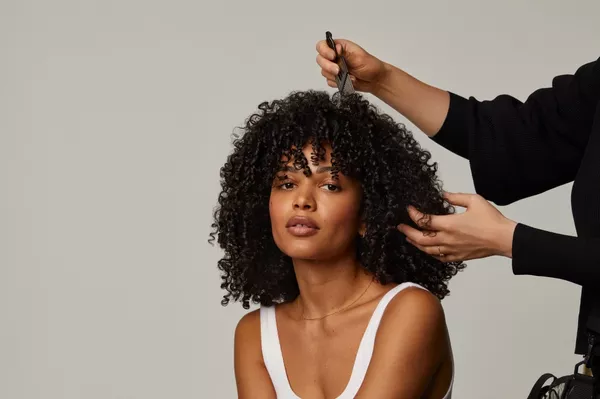Having healthy and lustrous hair is a desire shared by many. However, factors such as environmental pollution, heat styling, chemical treatments, and improper hair care can often leave our hair looking dull and damaged. In this article, we will explore effective methods and essential tips to improve hair quality, resulting in radiant and resilient tresses.
I. Nourishing from Within:
Balanced Diet:
A nutritious diet rich in vitamins, minerals, and proteins is essential for improving hair quality. Foods like eggs, fish, nuts, leafy greens, and fruits provide essential nutrients that promote hair health. Vitamin E, biotin, and omega-3 fatty acids are particularly beneficial for hair growth and strength.
Hydration:
Adequate hydration is crucial for healthy hair. Drinking plenty of water helps keep the scalp and hair follicles hydrated, preventing dryness and brittleness.
II. Gentle Hair Care Practices:
Choosing the Right Shampoo and Conditioner:
Selecting a shampoo and conditioner suitable for your hair type is vital. Look for products free of sulfates and harsh chemicals that can strip the hair of its natural oils. Conditioning helps restore moisture and nourishment to the hair, making it more manageable and less prone to breakage.
Avoid Over-washing:
Washing your hair too frequently can strip it of its natural oils, leading to dryness and damage. Aim to wash your hair every 2-3 days or as needed, depending on your hair type and lifestyle.
III. Regular Trimming:
Preventing Split Ends:
Regular trims are essential for maintaining healthy hair. Trimming the ends every 6-8 weeks helps prevent split ends from traveling up the hair shaft and causing further damage. This practice promotes hair growth and maintains the overall health of your hair.
IV. Heat Styling Protection:
Heat Protectant Products:
Using heat styling tools like flat irons and curling wands can cause damage to the hair shaft. Before applying heat, use a heat protectant spray or serum to create a barrier that shields the hair from high temperatures.
Lower Heat Settings:
When using heat styling tools, opt for lower heat settings whenever possible. High temperatures can weaken the hair, leading to breakage and dryness. Using lower heat settings can still achieve the desired style while minimizing damage.
V. Deep Conditioning Treatments:
Nourishing the Hair:
Deep conditioning treatments provide an intense dose of hydration and nourishment to the hair. Look for deep conditioning masks containing ingredients such as shea butter, argan oil, or keratin to restore moisture and repair damage.
Frequency of Treatments:
Incorporate deep conditioning treatments into your hair care routine once or twice a week, depending on your hair’s condition. Regular treatments can improve hair quality and maintain its shine and elasticity.
VI. Limiting Chemical Treatments:
Minimizing Color Treatments:
Frequent hair coloring can weaken the hair and cause it to become dry and brittle. Minimize the use of chemical hair dyes, and consider opting for more natural alternatives or semi-permanent options.
Avoiding Over-processing:
Over-processing the hair with chemical treatments like perms or relaxers can lead to severe damage. If possible, embrace your natural hair texture and limit the use of such treatments to maintain hair health.
VII. Hair Masks and Oils:
Natural Remedies:
Incorporating hair masks and oils into your routine can provide additional nourishment and shine to your locks. Coconut oil, argan oil, and almond oil are excellent choices for deep conditioning and promoting hair growth.
Applying Hair Masks:
Apply the hair mask or oil from roots to ends and leave it on for the recommended time before rinsing. Regular use of these natural remedies can help repair damaged hair and improve its overall texture.
VIII. Scalp Care:
Scalp Massages:
Scalp massages promote blood circulation, encouraging hair growth and overall hair health. Use gentle circular motions to massage the scalp with your fingertips, and consider incorporating essential oils like lavender or rosemary for added relaxation and benefits.
Exfoliation:
Regularly exfoliate the scalp to remove dead skin cells and excess oil, promoting a healthy scalp environment for hair growth. Use a gentle exfoliating scrub or a soft brush to avoid irritation.
IX. Protecting Hair at Night:
Silk or Satin Pillowcases:
Sleeping on silk or satin pillowcases reduces friction and helps maintain hair moisture, reducing frizz and breakage. These fabrics are gentler on the hair and can prevent tangles and knots.
Conclusion:
Improving hair quality requires a holistic approach that encompasses a balanced diet, gentle hair care practices, regular trims, heat styling protection, deep conditioning treatments, and limiting chemical treatments. By nourishing the hair from within, choosing suitable hair care products, and incorporating natural remedies, you can achieve radiant and resilient tresses. Remember that consistency is key; regular and proper care is necessary to maintain healthy and beautiful hair. Embrace these practices, and you’ll be rewarded with the lustrous locks you desire. With dedication and attention, anyone can achieve their hair goals and enjoy the confidence that comes with having healthy and vibrant hair.

